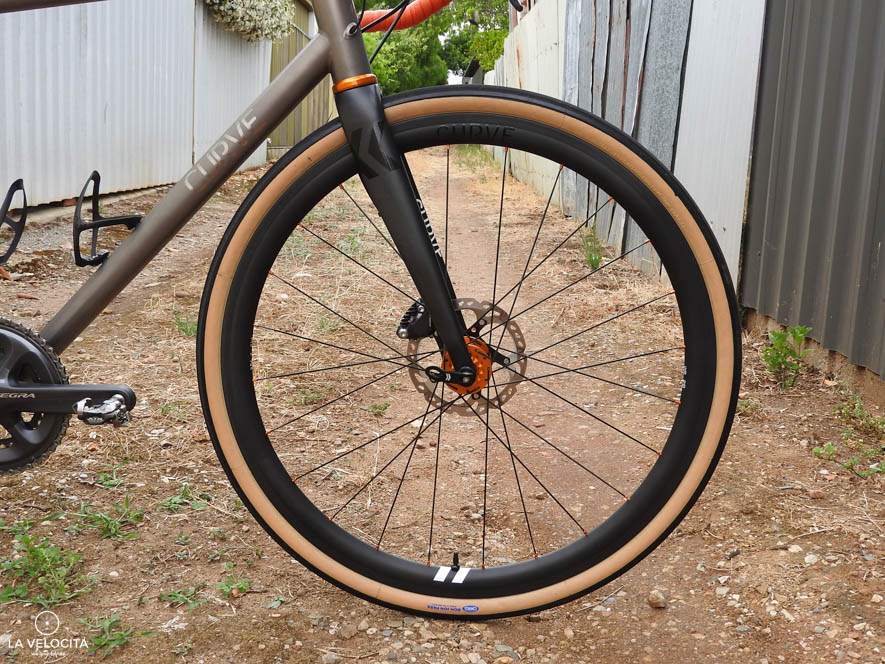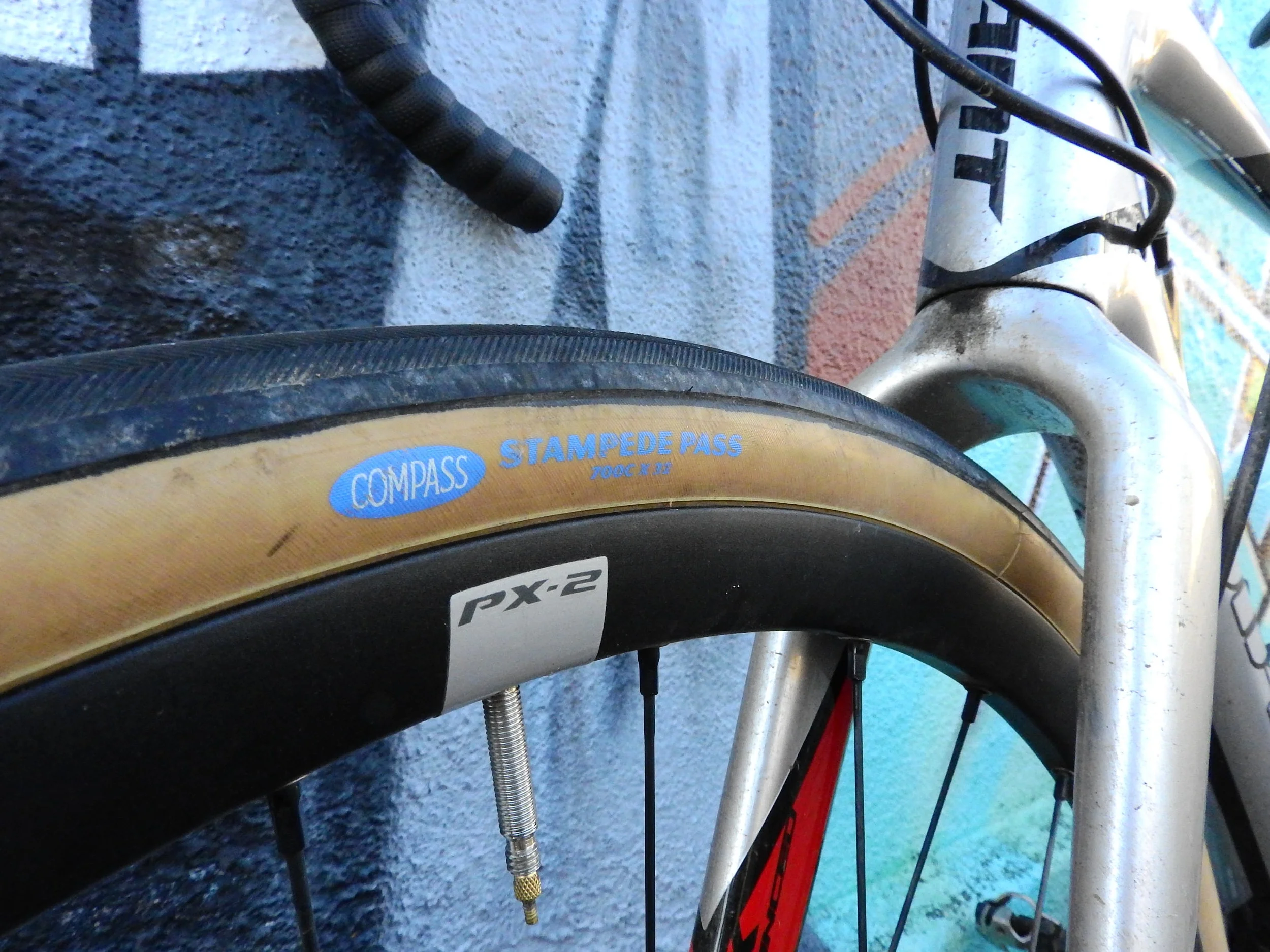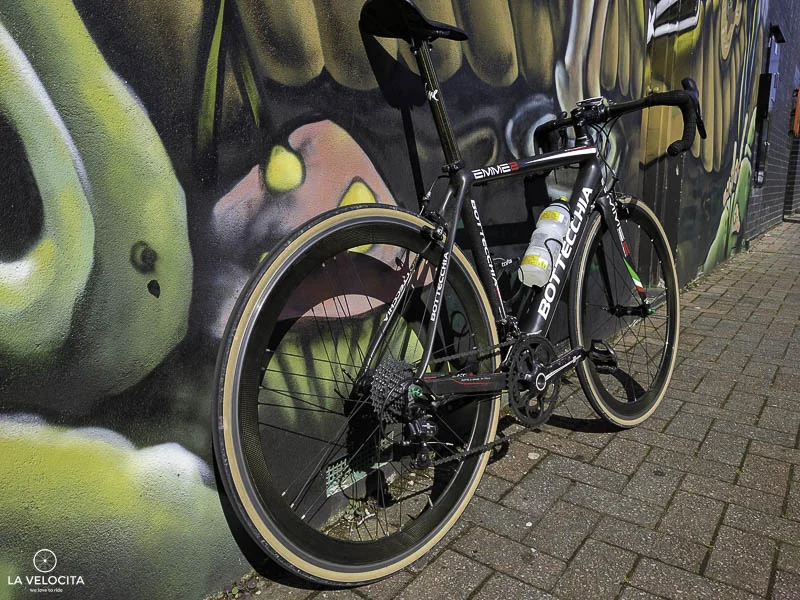Compass Bon Jon Pass tyres review

I’ve been continuing my voyage through the wide-rubber-specialists Compass Bicycles tyre catalogue. I’ve clocked up some miles on 2 sets of their 35mm Bon Jon Pass and results have been glorious and occasionally annoying.
Words and images - James Raison
The Bon Jon Pass is a Japanese-made 35mm clincher designated as “tubeless compatible” as distinct from “tubeless ready”. I first got the standard casing (around 350g) then is an ultralight option (around 303g). Australian RRP is $90 per tyre. They are certainly a premium offering.
A TALE OF 2 TYRES
My test period with the Bon Jons started in November 2016 and includes 2 different sets; first with standard casing and second with the ultra light. The first set was replaced by Compass when I sent them some photos of sealant bubbling through the sidewalls. They assured me that wasn’t normal behaviour and dispatched me a brand spanking new set once they’d been re-stocked with another production run. Rock solid customer service.
The tanwall version is gorgeous
The second set appeared with stealthy black colour and a visibly thicker bead. They were easier to configure tubeless than the first set, and have held air exceptionally well since new. They’ve chewed a decent amount of tarmac in that time.
THE RIDE
Let’s cut right to it: these tyres have the nicest ride quality I’ve experienced. The flexy sidewalls, added to the tubeless setup, and running at ultra-low 40-50psi result in plushness well beyond what most roadies have ever dreamed.
I spent a lot of time riding on coarse, generally horrible, backroads and highways in South Australia. These roads will bump and vibrate through your body on narrow, harder tyres. That all disappears with the Bon Jons beneath you. It’s like a vibration-damping micro-suspension at all times.
But what does that mean? It means you feel better stepping off the bike. Seriously. I did multiple rides over 300 km on Bon Jons and I’ve never felt so fresh after that distance compared to riding narrower tyres on the same roads for the same distance.
The ride quality was still good with tubes and far better than any other tyre/tube combo I’ve used, but not as amazing as when it was tubeless. They do need a large tube which adds a decent amount of weight.
THE NEED FOR SPEED
Commenting on the “speed” of these tyres is difficult because of how much they insulate you from the road. Compass founder Jan Heine has been at the forefront rolling resistance tests. His real-world experiments concluded that supple, wide tyres at low pressure reduced rolling resistance compared to narrower tyres at high pressure. Many riders won’t accept the science because tyres at lower pressures feel slower. The more you bump and vibrate, the faster you feel like you’re going. Remove those sensations and you feel slower. I feel like I’m going slower on the Bon Jons, but the data says otherwise. Moving speeds were anecdotally no different.
But wait, there’s more! More of Heine’s research found evidence that reducing bumping and vibrating increases your ability to put out power. Check out the research.
So what are you waiting for? You can go out and buy less rolling resistance, and improve your ability to put out power! So go on. I’ll wait until you come back.
WHAT’S THE CATCH?
Before you buy, there’s two problems with these tyres: price and grip.
Yes, they’re fantastic tyres but $90 is a lot. I really enjoyed the Specialized Roubaix Pro 2BR which is 32mm, tubeless and only $60. The Spez aren’t as good, but at $30 less per tyre they’re better dollar-for-dollar.
Does reduced rolling resistance compromise braking performance?
I’ve had 4 sets of Compass tyres now: 2 Bon Jon Pass, Stampede Pass 32 mm, and Cayuse Pass 26 mm. I’ve put many thousands of kms on them collectively and there’s a trend among all of them. They will slide sooner under sudden braking and in the wet, than tyres I’ve ridden from Specialized, Schwalbe, and Vittoria in the same period ridden on the same bikes. They grip well most of the time, but they surprised me a few times. It’s something I keep in mind when I’m riding in inclement weather.
CONCLUSIONS
I love how these tyres feel to ride on. They are truly fantastic. Fast rolling, a buttery smooth ride quality, and more watts (according to science anyway). The second set has behaved itself very well as tubeless. They hold air, and I haven’t noticed any punctures.
You pay a lot for all of that performance and their grip could be better. The wider tyre movement is happening and Compass loses its niche as more large companies roll out their offerings. For now, these are the best wide road tyres I’ve used.
If you like your bike to beat you up, or you judge your speed solely by painfulness I’d recommend looking elsewhere for your rubber. Maybe 1997.
Disclosure: No disclosure necessary, I bought these from Treadly Bike Shop








